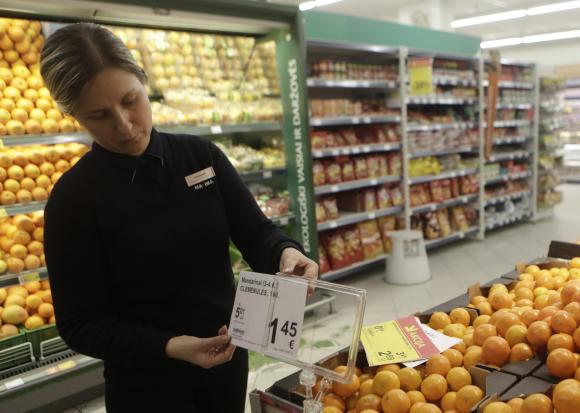Euro zone consumer prices fell by more than expected in December because of much cheaper energy, a first estimate by the European statistic office showed in data that is likely to trigger the European Central Bank's government bond buying program.
Eurostat said inflation in the 18 countries using the euro in December was -0.2 percent year-on-year, down from 0.3 percent year-on-year in November. The last time euro zone inflation was negative was in October 2009, when it was -0.1 percent.
Economists polled by Reuters had expected a -0.1 percent year-on-year fall in prices. The ECB wants to keep inflation below but close to 2 percent over the medium term.
Eurostat said that core inflation, which excludes the volatile energy and unprocessed food prices, was stable at 0.7 percent year-on-year in December -- the same level as in November and October.
But energy prices plunged 6.3 percent year-on-year last month and unprocessed food was 1.0 percent cheaper, pulling down the overall index despite a 1.2 percent rise in the cost of services.
The ECB is concerned that a prolonged period of very low inflation could change inflation expectations of consumers and make them hold back their purchases in the hope of even lower prices, triggering deflation.
Because the ECB's interest rates are already at rock bottom, the bank is preparing a program of printing money to buy government bonds on the secondary market to inject even more cash into the economy, boost demand and make prices rise faster.
Economists expect the decision to launch such a bond buying program could be made as soon as the ECB's next meeting on January 22.
"We are in technical preparations to adjust the size, speed and compositions of our measures early 2015, should it become necessary to react to a too long period of low inflation. There is unanimity within the Governing Council on this," ECB President Mario Draghi said on January 1.
Inflation in the euro zone has below 1 percent -- or what the ECB calls the danger zone -- since October 2013.


















































